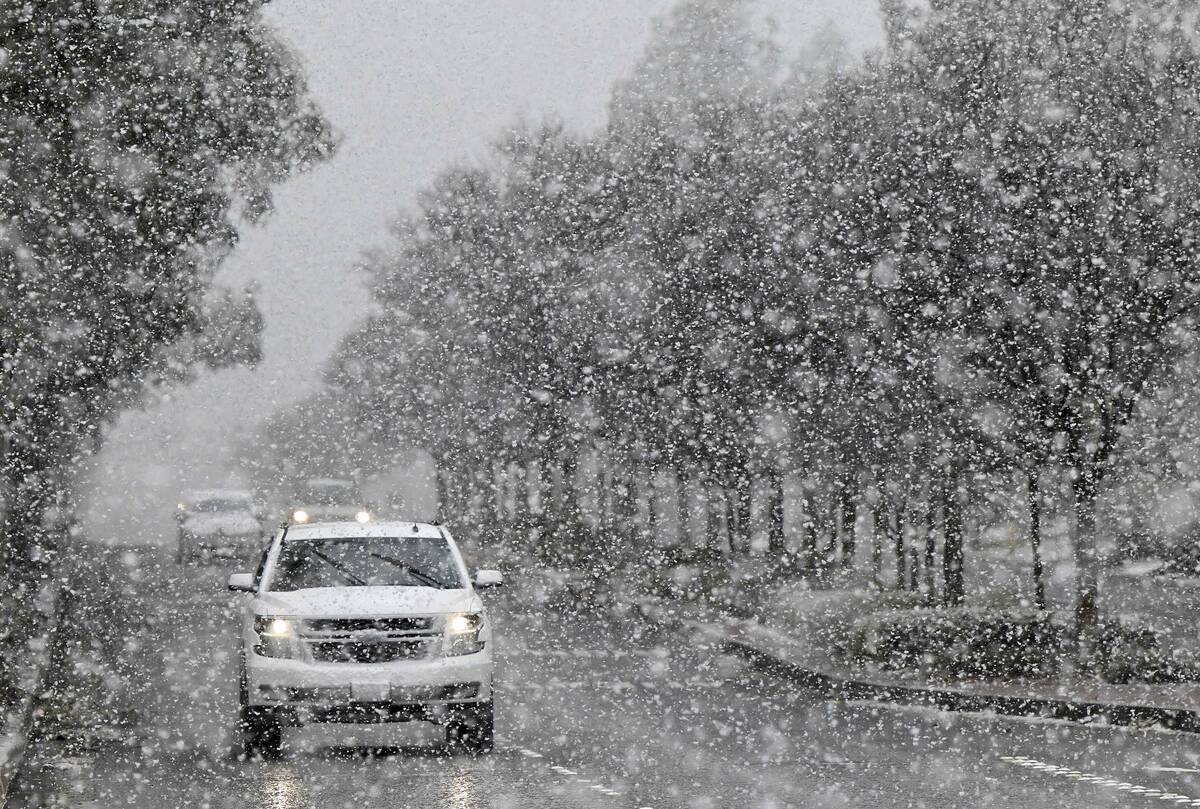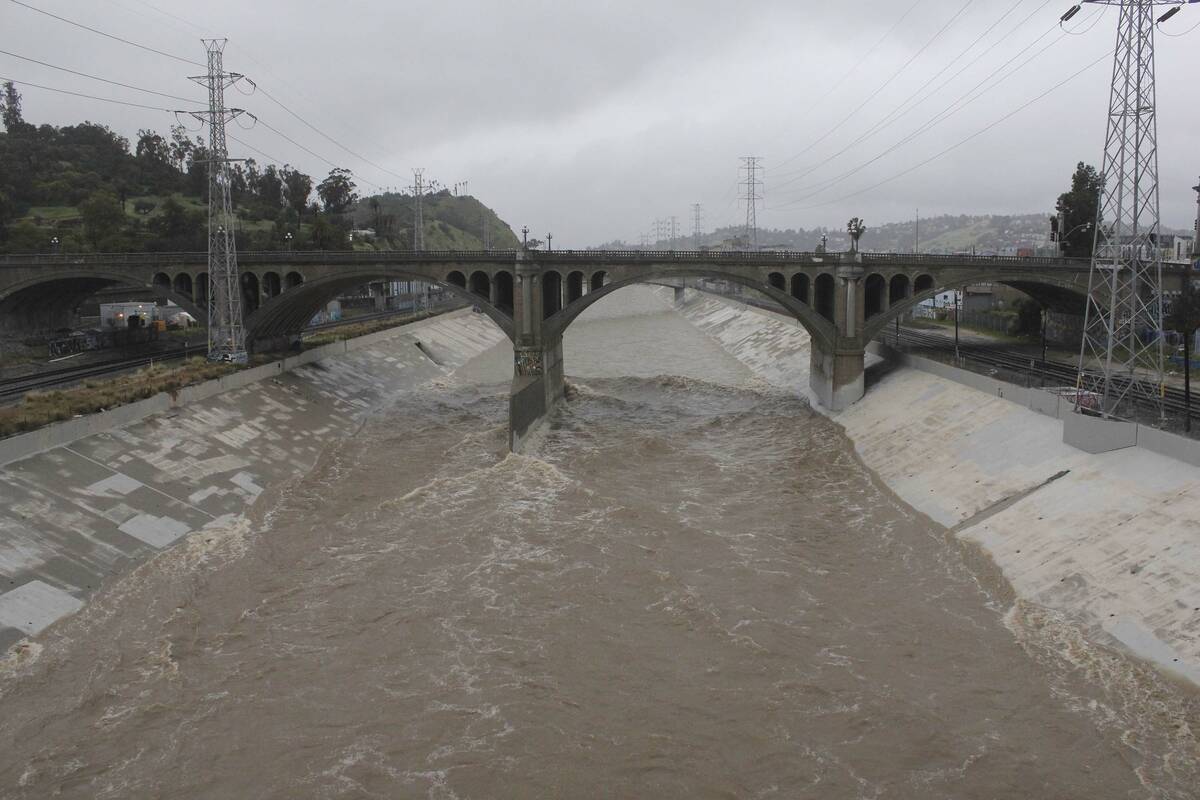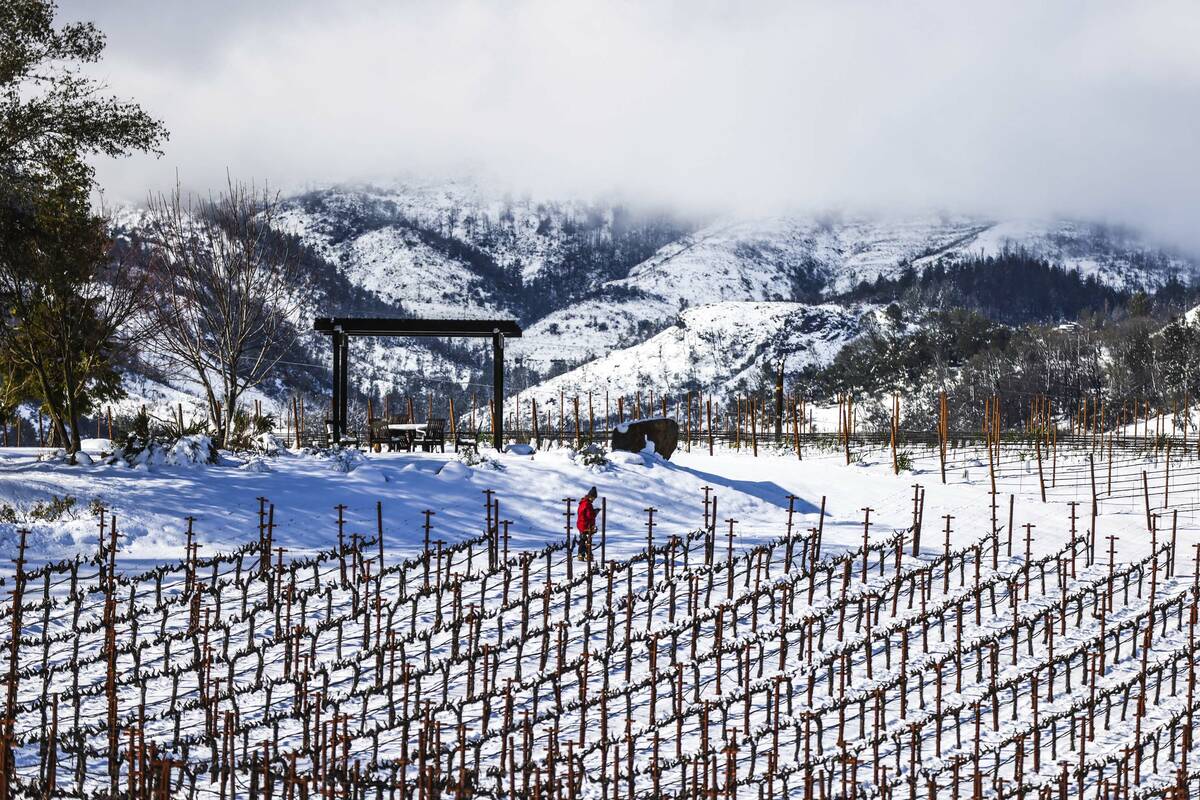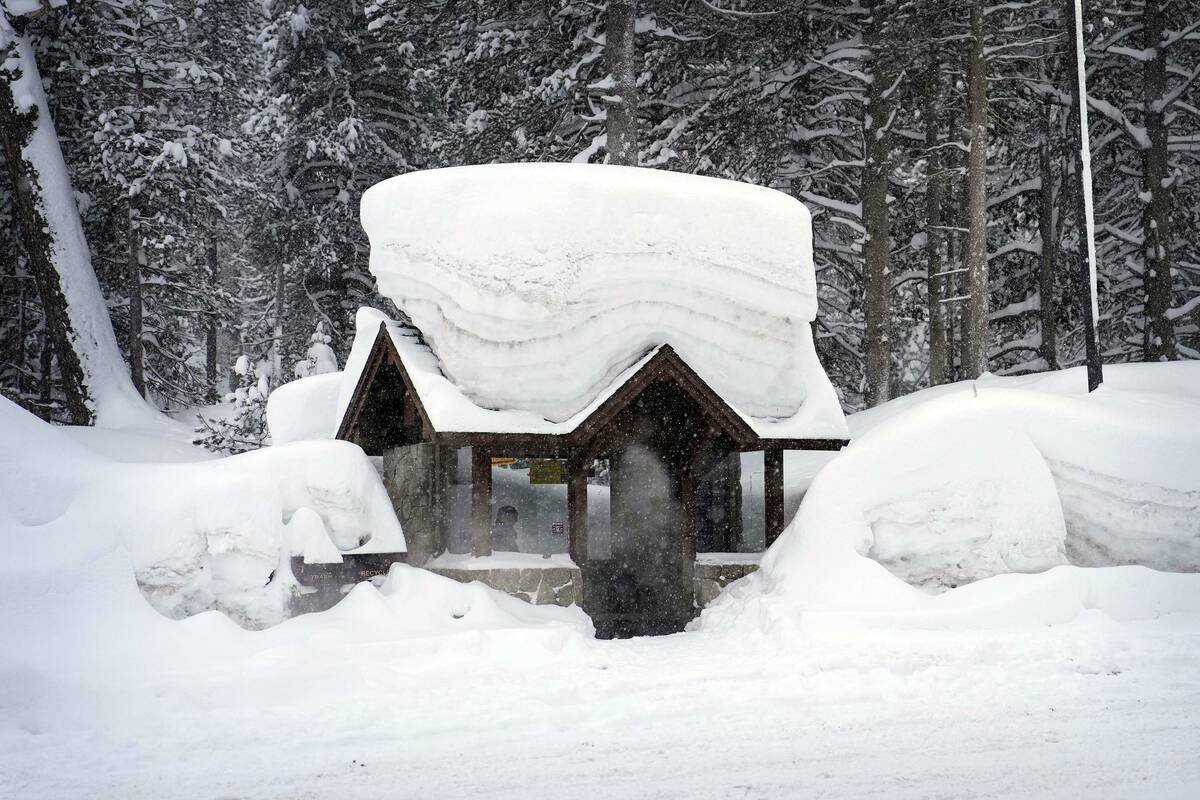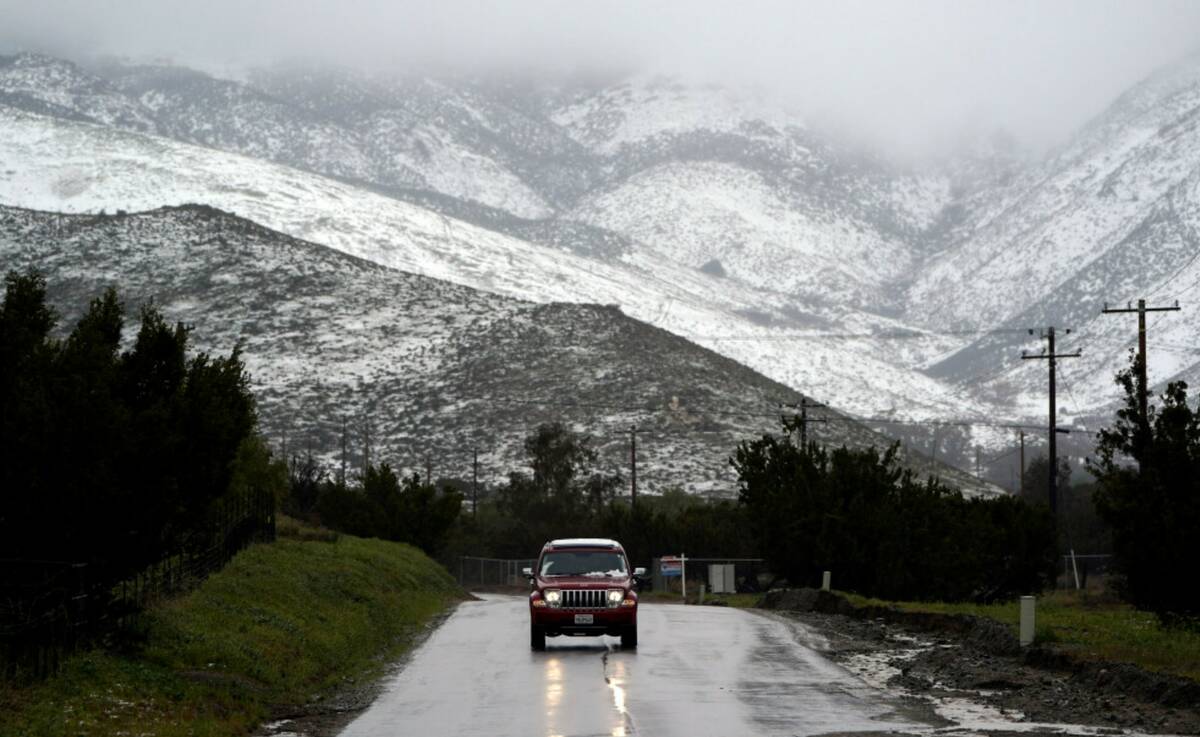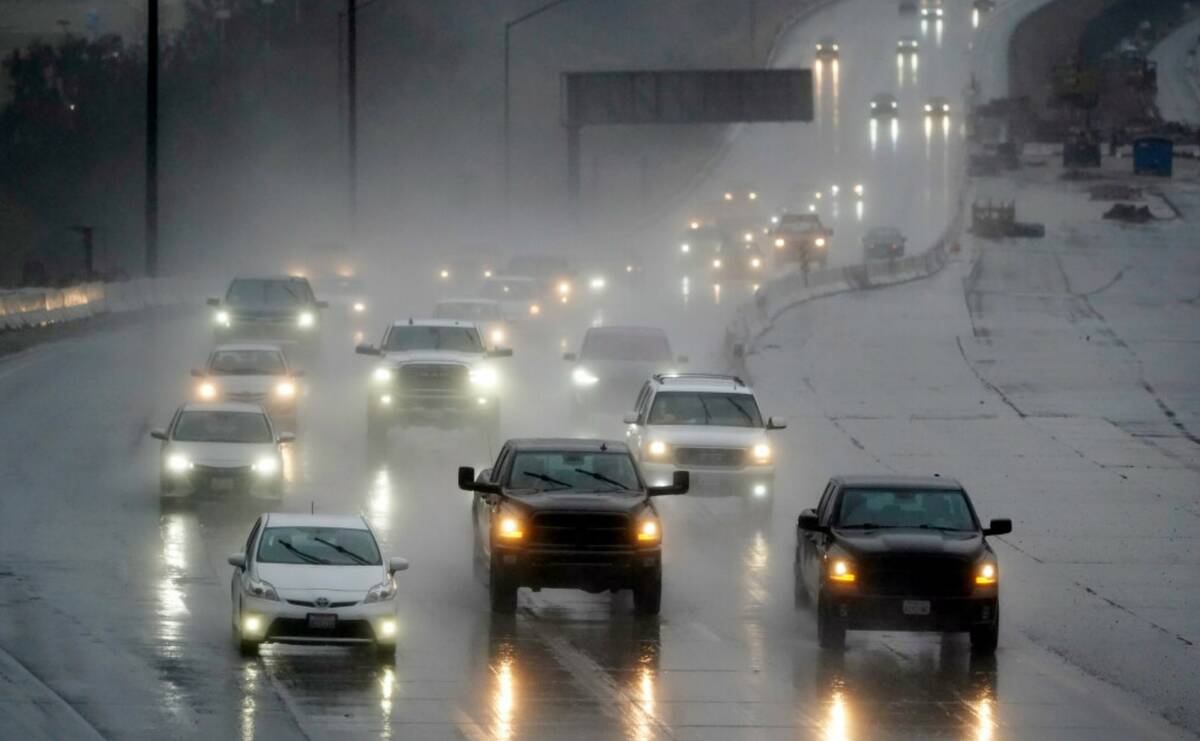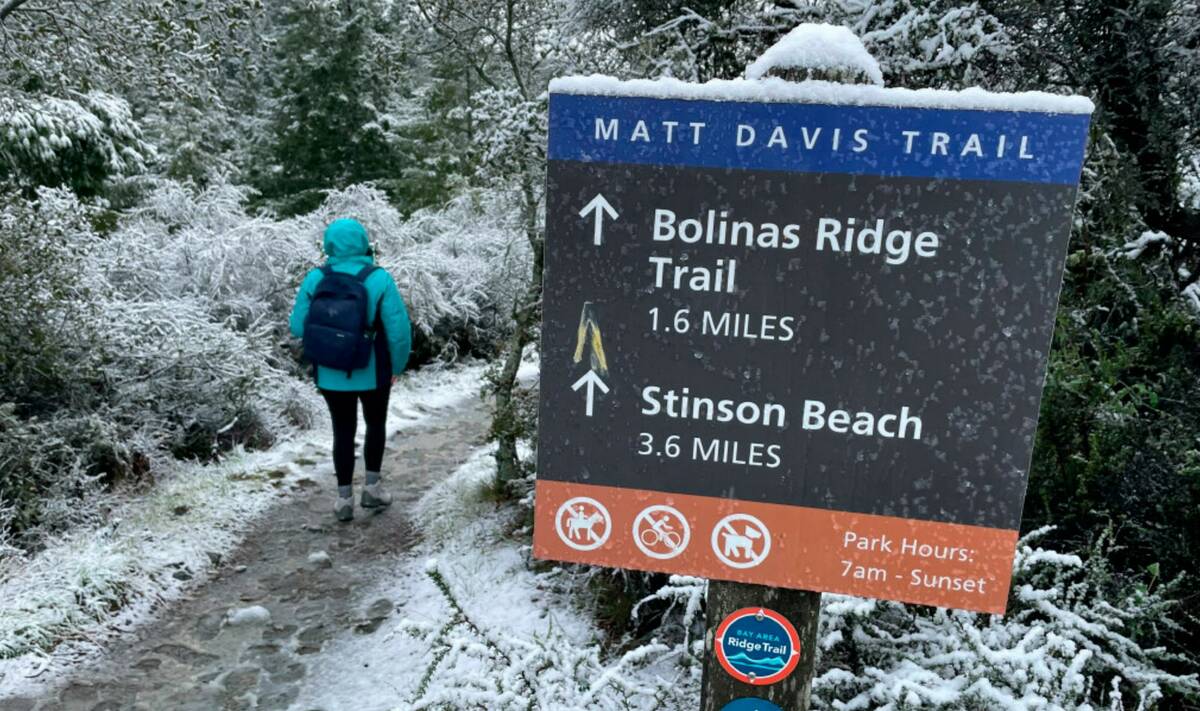Winter storm slams Southern California
LOS ANGELES — A powerful winter storm that swept down the West Coast with flooding and frigid temperatures shifted its focus to southern California on Saturday, swelling rivers to dangerous levels and dropping snow in even low-lying areas around Los Angeles.
The National Weather Service said it was one of the strongest storms to ever hit southwest California and even as the volume of wind and rain dropped, it continued to have significant impact including snowfall down to elevations as low as 1,000 feet (305 meters). Hills around suburban Santa Clarita, north of Los Angeles, were blanketed in white, and snow also surprised inland suburbs to the east.
Blizzard warnings continued in the mountains and flood advisories blanketed the region, but forecasters offered some relief, predicting the storm would taper off later in the day.
After days of fierce winds, toppled trees and downed wires, more than 120,000 California utility customers remained without electricity, according to PowerOutage.us. And Interstate 5, the West Coast’s major north-south highway, remained closed due to heavy snow and ice in Tejon Pass through the mountains north of Los Angeles.
Multiday precipitation totals as of Saturday morning included a staggering 81 inches (205 centimeters) of snow at the Mountain High resort in the San Gabriel Mountains northeast of Los Angeles and up to 64 inches (160 centimeters) farther east at Snow Valley in the San Bernardino Mountains.
“There’s already been reports of 2 to 3 feet (60 to 90 centimeters) across some of the higher peaks, and we’re looking at an additional foot, maybe two, of additional snowfall through the rest of the day,” said National Weather Service meteorologist Zach Taylor.
The Los Angeles River and other waterways that normally flow at a trickle or are dry most of the year were raging with runoff Saturday. The Los Angeles Fire Department used a helicopter to rescue four homeless people who were stranded in the river’s major flood control basin. Two were taken to a hospital with hypothermia, said spokesperson Brian Humphrey.
In the Valencia area of north Los Angeles County, the roiling Santa Clara River carried away three motorhomes early Saturday after carving into an embankment where an RV park is located. No one was hurt, KCLA-TV reported, but one resident described the scene as devastating.
Meanwhile, people farther east were struggling to deal with the fallout from storms earlier this week.
More than 350,000 customers were without power in Michigan as of early Saturday afternoon, according to reports from the the two main utilities in the state, DTE and Consumers Energy. Both said they hope to have the lights back on for most of their customers by Sunday night.
Brian Wheeler, a spokesman for Consumers Energy, said half an inch (1.27 centimeters) of ice weighed down some power lines — equivalent to the weight of a baby grand piano.
“People are not just angry but struggling,” said Em Perry, environmental justice director for Michigan United, a group that advocates for economic and racial justice. “People are huddling under blankets for warmth.”
She said the group will demand that utilities reimburse residents for the cost to purchase generators or replace spoiled groceries.
In Kalamazoo, Michigan, Allison Rinker was using a borrowed generator to keep her 150-year-old house warm Saturday after two nights in the cold and dark.
“We were all surviving, but spirits were low on the second day,” she said. “As soon as the heat came back and we were able to have one or two lights running, it was like a complete flip in attitude.”
After driving to a relative’s home to store food, Rinker, 27, compared the destruction of trees to tornado damage.
“The ice that was falling off the trees as it was melting was hitting our windshield so hard, I was afraid it was going to crack,” she said. “There’s just tree limbs everywhere, half of the trees just falling down. The destruction is insane.”
Back in California, the Weather Prediction Center of the National Weather Service forecast heavy snow over the Cascade Mountains and the Sierra Nevada through the weekend.
The low-pressure system was also expected to bring widespread rain and snow in southern Nevada by Saturday afternoon and across northwest Arizona Saturday night and Sunday morning, the National Weather Service office in Las Vegas said.
An avalanche warning was issued for the Sierra Nevada backcountry around Lake Tahoe, which straddles the California-Nevada border. Nearly 2 feet (61 cm) of new snow had fallen by Friday and up to another 5 feet (1.5 meters) was expected when another storm moves in with the potential for gale-force winds and high-intensity flurries Sunday, the weather service said.
In Arizona, the heaviest snow was expected late Saturday through midday Sunday, with up to a foot of new snow possible in Flagstaff, forecasters said.
Weekend snow also was forecast for parts of the upper Midwest to the Northeast, with pockets of freezing rain over some areas of the central Appalachians. The storm was expected to reach the central high Plains by Sunday evening.
At least three people have died in the coast-to-coast storms. A Michigan firefighter died Wednesday after coming into contact with a downed power line, while in Rochester, Minnesota, a pedestrian died after being hit by a city-operated snowplow. Authorities in Portland, Oregon, said a person died of hypothermia.
Much of Portland was shut down with icy roads after the city’s second-heaviest snowfall on record this week: nearly 11 inches (28 centimeters). While the city saw sunny skies and temperatures approaching 40 degrees Saturday afternoon, the reprieve — and thaw — was short-lived. More snow was expected overnight and Sunday.



